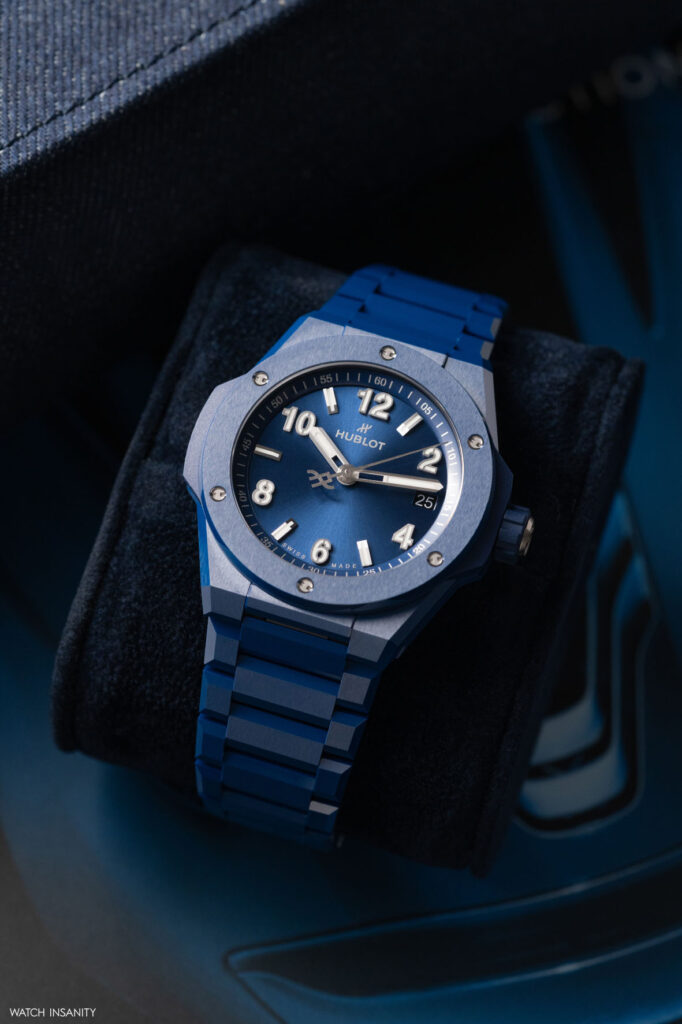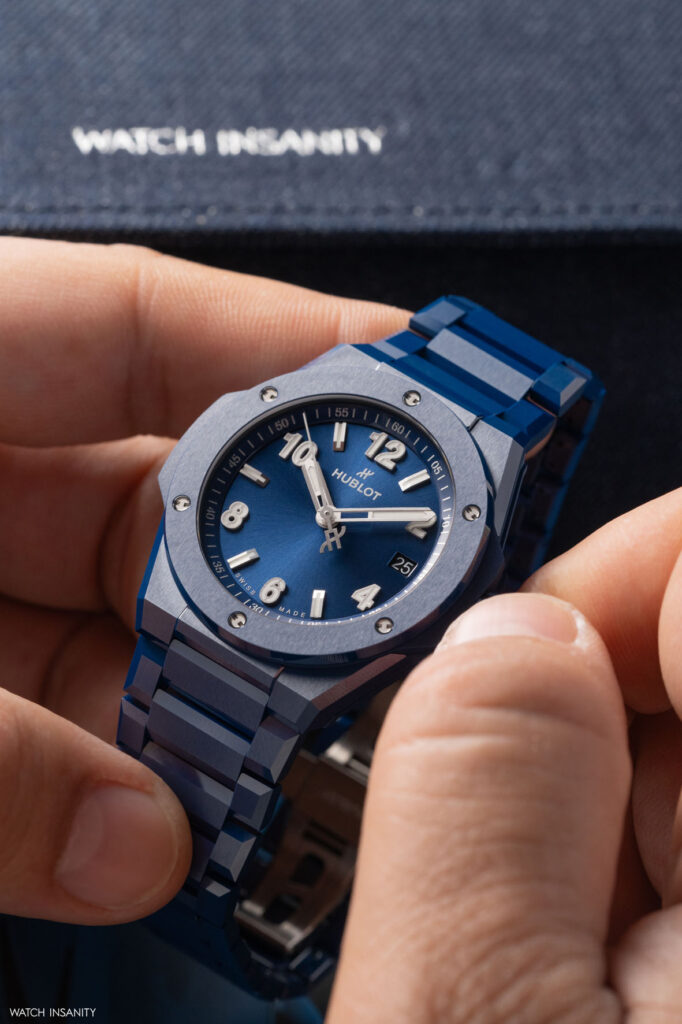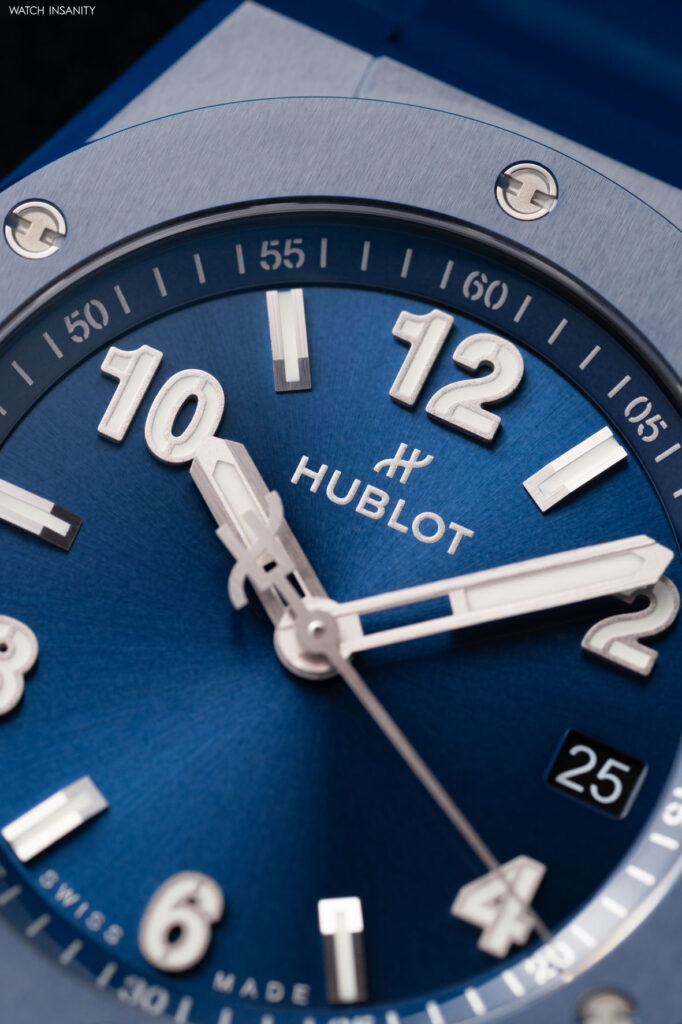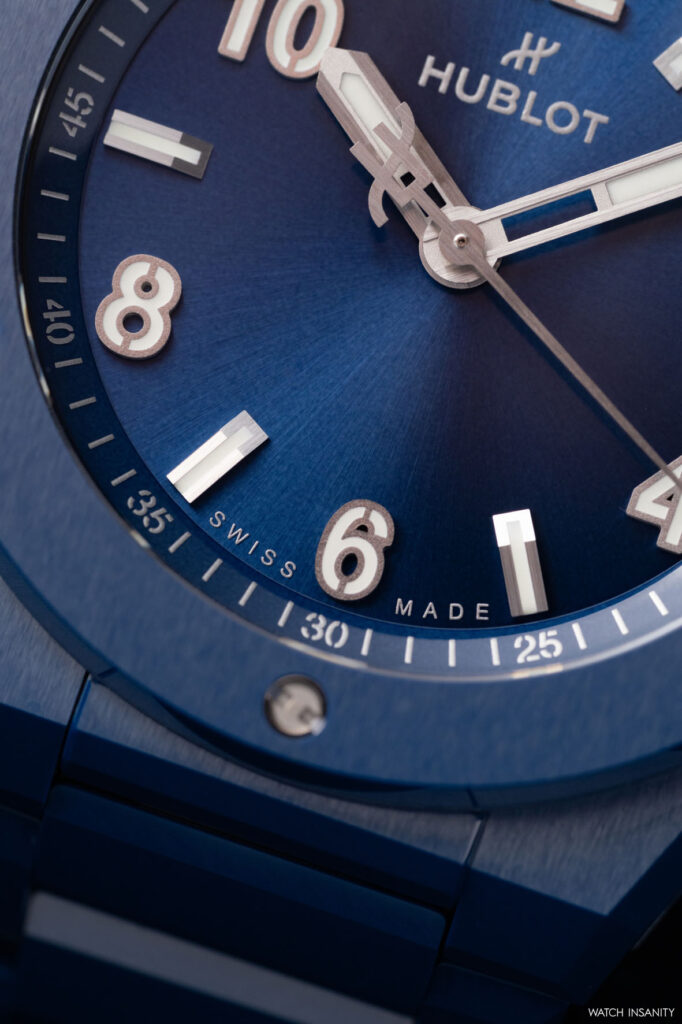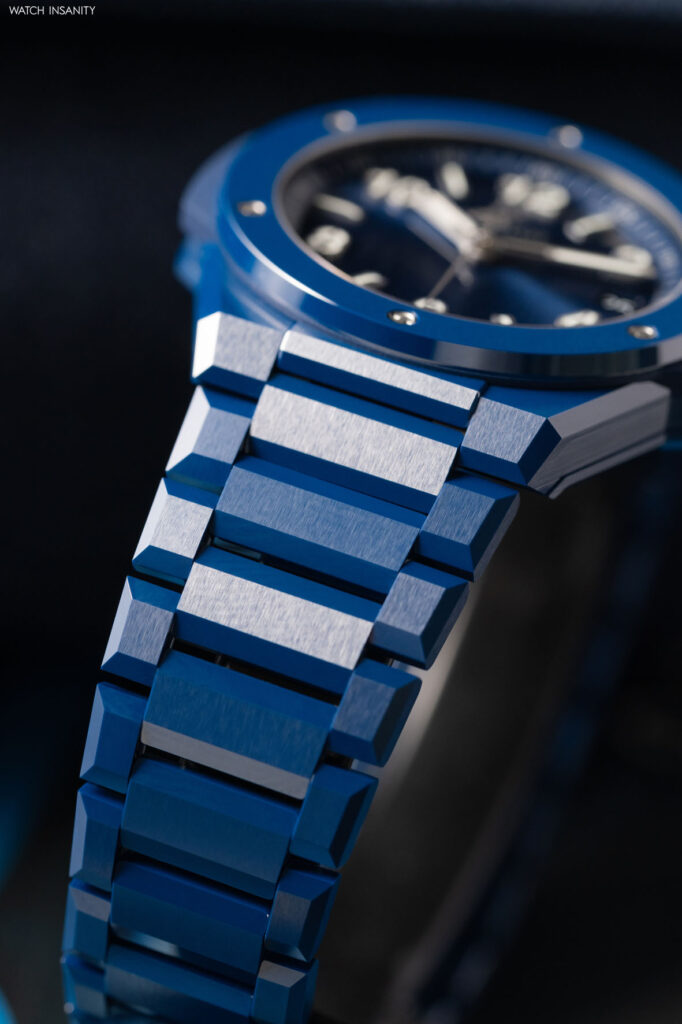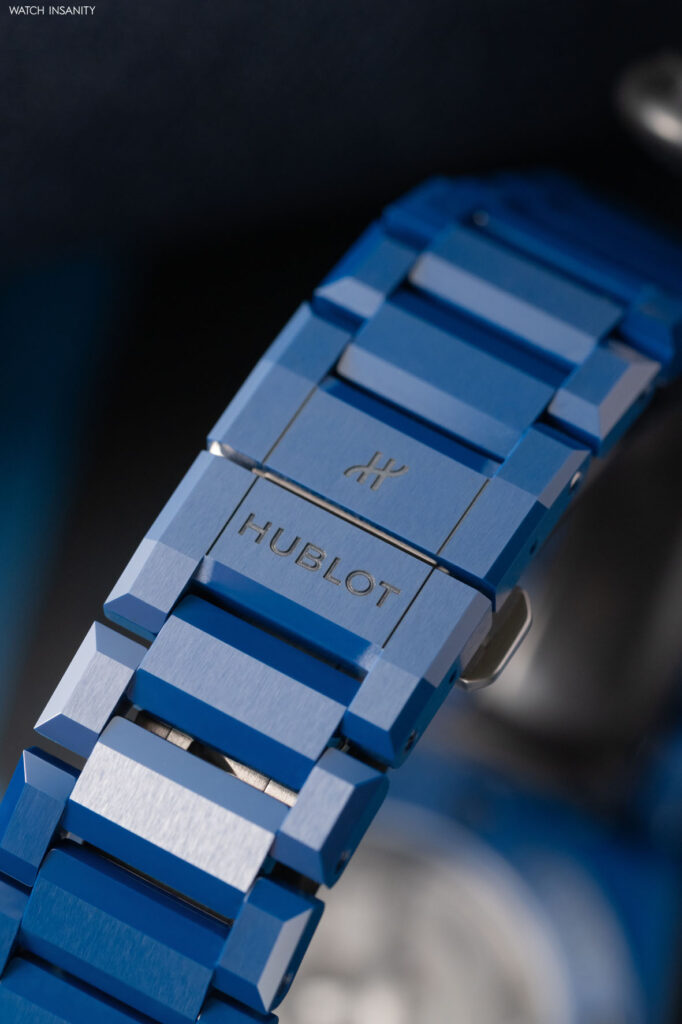Hublot Big Bang Integrated Time Only 38mm: contemporary elegance
18 August 2024According to Australian writer Bronnie Ware, ‘to change means starting to look at the same things with new eyes’; a bit like what Hublot did with its Big Bang Integrated Time Only. It was in 2020, shortly before the world was engulfed by the pandemic nightmare, when the Big Bang collection – a symbol of contemporary watchmaking by Hublot – first welcomed the integrated bracelet. What was a revolution in watch design in the 1970s, and which gave rise to a strong and vital trend even today, found its expression in the Big Bang Integral Chronograph with its 42 mm case. Two years later, came the Big Bang Integral Time Only, with a smaller 40 mm case.
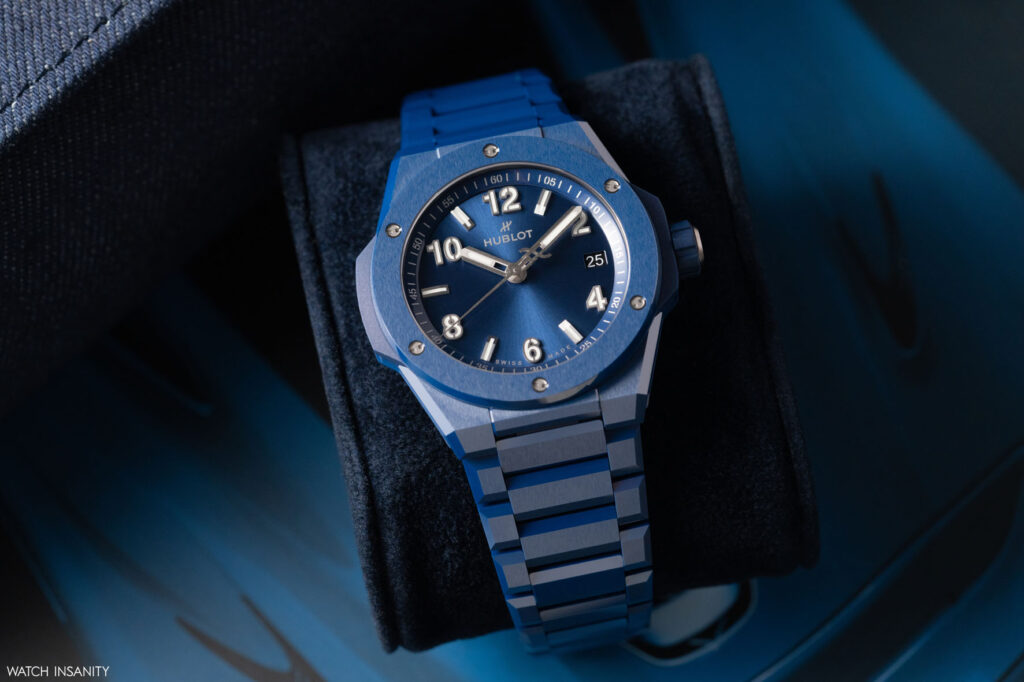
Those early interpretations of the integrated bracelet by Hublot reflected the spirit of the Nyon-based brand’s watches. Indeed, the Integral watches of the early days featured skeletonised sapphire dials and sporty red and black highlights. Like many other large Hublot models, they were decidedly masculine, designed for tough wrists with little inclination towards understatement. That was what the market wanted, that was Hublot. A perfect match that contributed to the success of the first Integral references. Times and fashion trends, however, evolve, and if the market begins to demand something different, it is up to the brand’s intelligence to grasp the change and respond accordingly. Hublot has done so with the new versions of the Big Bang Integrated Time Only 38 mm, which further refine the collection’s aesthetics.
THE HUBLOT BIG BANG INTEGRATED TIME ONLY’S 38 MM CASE
When most enthusiasts think of Hublot, the first thing they normally have in mind is a range of sapphire cases, complex tourbillons, ultra-modern materials and striking colours. A penchant for vibrant watchmaking that leaves little room for a classic, ‘whispery’ design idea, in the current perception of the brand. And yet, it was here that Hublot once again displayed its ability to astonish, to come out on the market with something you don’t expect, to disorientate. ‘The art of fusion’, which is its payoff, becomes ‘the art of the unexpected’ with the new Hublot Big Bang Integrated Time Only 38 mm line. As part of the Watches and Wonders 2024 novelties, the manufacture has brought out the more linear and pure side of the collection, a smaller and cleaner execution of the brand’s signature silhouette. We put it on our wrist, and it is not an overstatement to say that it is perhaps the most wearable timepiece in Hublot’s recent history.
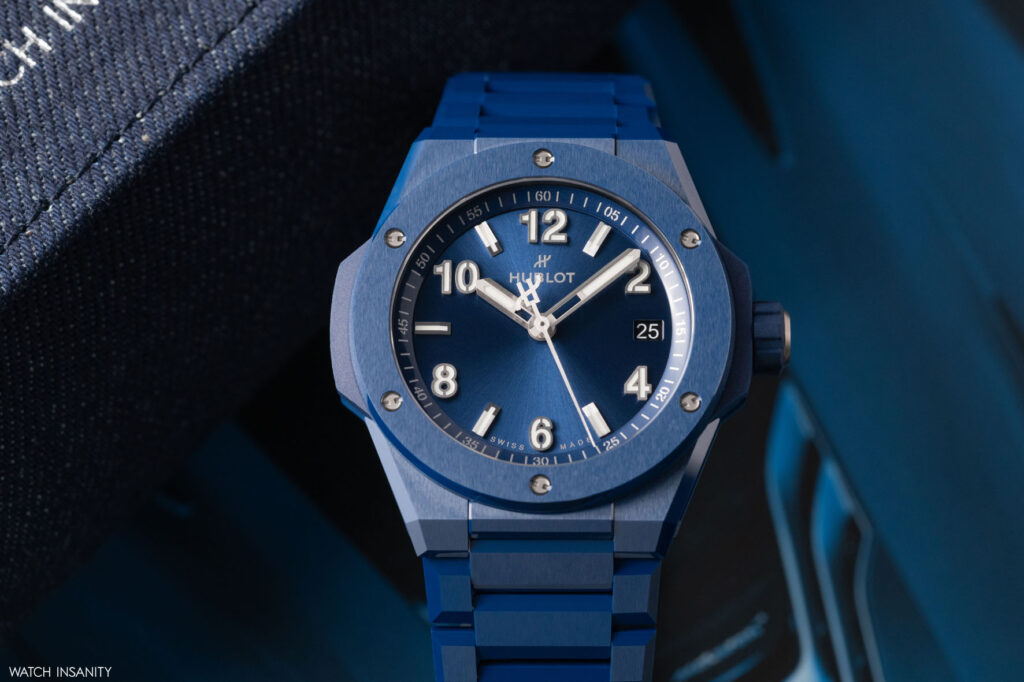
It doesn’t take a genius to realise that the Big Bang Integrated Time Only 38 mm collection’s greatest strength is the small diameter of its case. It is a contemporary 38 mm, in the sense that it meets today’s watchmaking tastes which tend towards smaller dimensions, but also because it combines a recognisable and well-defined design with modern materials appreciated by enthusiasts. In the pictures on these pages, you can see the version with a case and integrated bracelet in satin-finished navy blue ceramic and a matching dial, but there are also two references in polished and satin-finished titanium, and two in 18-carat King Gold with a black or blue dial. As well as another very elegant black, full ceramic version.
Among the details that characterise the watch there is a lateral groove on the case, which extends from lug to lug and brings a feeling of lightness. At the same time, however, it adds a touch of complexity to the design, making what might otherwise seem to be a simple, straightforward version of the archetypal sports watch with an integrated bracelet appear more dynamic. The large lateral ‘ears‘ of the case, characteristic of the Big Bang collection, and the short, sharply curved lugs add some movement to this extremely clean design. The overall thickness of the watch is well below the 10 mm limit (it measures 9.4 mm) and, together with the 38 mm diameter, makes the Big Bang Integrated Time Only 38 mm more elegant than most contemporary Hublots.
A LOOK AT THE DIAL
Above all, however, it is the bezel adorned with the six functional H-shaped screws and the two ‘ears‘ on both sides of the case that, together with the dial, define the aesthetics of the watch. They extend at 3 and 9 o’clock and are reminiscent in their shape of a ship’s portholes – which gave the Nyon brand its name. On the titanium and King Gold models, Hublot has further emphasised these elements with a matt black coating. The ceramic models, on the other hand, have a sandblasted finish that contrasts with the satin finish of the case and bracelet.
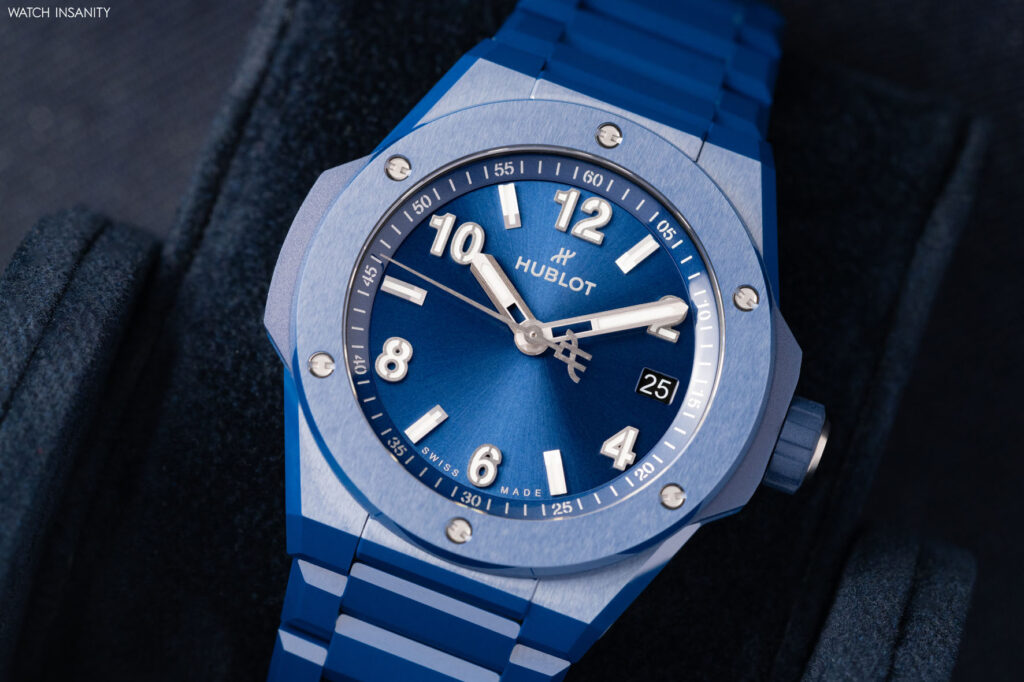
Like the case, the dial of the 38 mm Big Bang Integrated Time Only exudes the essence of the collection in its simplest form. The large, pointed, skeleton hour and minute baton hands, and the mix of applied hour markers (odd-numbered) and stencil-style Arabic numerals (even-numbered, from 2 to 12) are both hallmarks of the Big Bang; harmonised with the watch’s overall, rather linear design, they manage to be bold and unconventional.
On the references with a black dial, the dial’s finish is polished while the blue version has a soleil finish. The dial of the Big Bang Integrated Time Only 38 mm is characteristic as it is made of ferromagnetic steel, a material that allows the movement underneath to be optimally protected from magnetic fields. And we all know how crucial this is to preserving the chronometric precision of the calibre. At 3 o’clock there is the date window, cut out and not framed; the date disc has white numerals on a black background, which blend in well on the references with a black dial, while it is slightly distorting on the blue ones, also due to the lack of a frame.
CALIBRE AND BRACELET: THE WORK OF HUBLOT
A new automatic calibre, the HUB1115, runs inside the case of the Big Bang Integrated Time Only 38 mm. Hublot does not describe it as ‘manufacture’ and, although the brand does not go into detail, it is reasonable to assume that it is an evolution of the HUB1110 which equips the Classic Fusion collection; hence, a Sellita SW300-based movement with improved performance. Hublot points out that, compared to its predecessor, this model is equipped with a new oscillating weight bearing and a stronger barrel spring, allowing the power reserve to be extended to around 48 hours. That of the HUB1110 went up to 42 hours, with both movements running at 28,800 vibrations per hour. The brand has also paid special attention to the finishing ofthe new calibre – satin-brushed bridges, anthracite ruthenium treatment, skeletonised tungsten oscillating weight – so the decision to make it visible through a transparent sapphire crystal case back seems sensible.
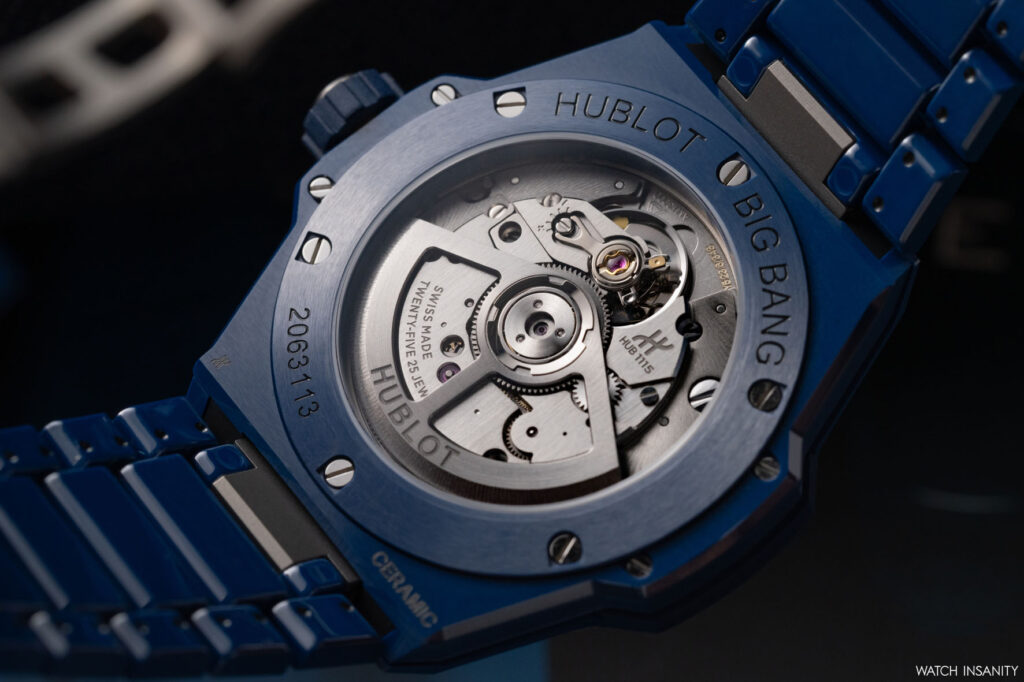
Dulcis in fundo, the bracelet. Because while it is true that the case, bezel and dial define this watch as a 100% Hublot, the ceramic and bracelet design of the 38 mm Big Bang Integrated Time Only are the two elements that complete its DNA. The three-row integrated bracelet is strongly tapered and ends with a butterfly folding clasp circumscribing its bulk and thickness. Its strength, however, apart from its softness on the wrist, lies in the workmanship defining each link, which are satin-finished in the upper parts and polished in the inner parts and bevels. A combination that allows the ceramic, a material that is already ‘hot’ in itself, to glow with different reflections depending on how the light hits it. In essence, Hublot has done a great job (working ceramic in this way is anything but trivial from an industrial point of view) which, we confirm, is a pleasure on the wrist.
Lastly, the prices, which are inline with Hublot’s build quality and the use of noble and refined materials. The full ceramic, black and blue versions cost 15,900 euros; those in titanium 13,600 euros; and those in King Gold 49,100 euros. In any case, an intelligent extension of the assortment especially because, as we wrote above, at first glance it might seem far from the aesthetics one would expect from the brand. Instead, the Big Bang Integrated Time Only 38 mm turns out to be a piece that is as sporty as elegant, very wearable, and capable of changing the usual perspective with which one looks at Hublot.
By Davide Passoni

